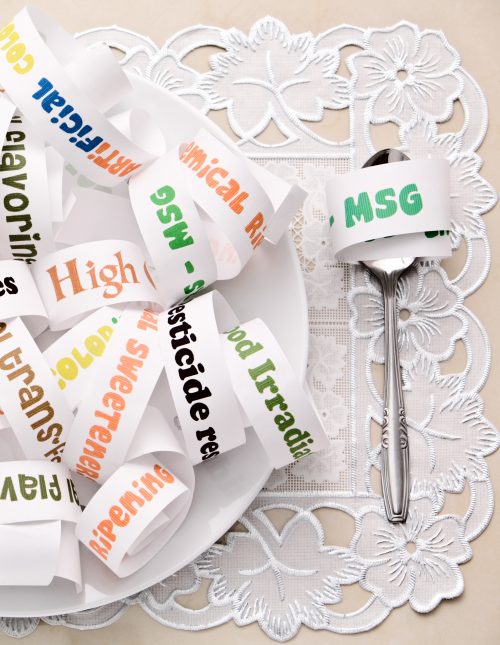
Senior nutritionist Rose Carr takes us through some common food additives, including how to identify them and what they’re for.
Confused as to why additives are put into food and what those numbers mean?
Food additives are classed according to their function in a food. In the ingredients list, the class name of the additive is listed followed by the additive name or code number in brackets. For example: Thickener (pectin) or Thickener (440).
What are additives and what do they do
Colours: enhance the appearance of foods.
Preservatives: are important for food safety as they can stop or slow the growth of mould, bacteria and yeast that cause food to deteriorate.
Acidity regulators: adjust the acidity level in food. This can affect taste by maintaining a sour or sharp taste, and can also slow the growth of micro-organisms.
Antioxidants: help stop oils and fats deteriorating and developing rancid flavours.
Emulsifiers: stop mixtures of oil and water-based ingredients from separating.
Thickeners: thicken food to the desired consistency.
Gelling agents: modify texture or help food to set.
Anti-caking agents: reduce the tendency of particles to stick together so that they flow freely, eg in salt.
Humectants: stop food from drying out.
Raising agents: are used in bakery products to increase volume, ie to make them rise.
Flavour enhancers: improve the flavour and/or smell of food.
Sweeteners: replace the sweetness normally provided by sugar. Some are intense sweeteners with very little energy (kilojoules).
Other classes of additives include foaming agents, glazing agents, firming agents, stabilisers, propellants, bulking agents, enzymes and anti-foaming agents.
For a full list of food additives, in both numerical and alphabetical order, see Food Standards
What are E numbers?
The E numbers are shorthand for additive names and are derived from the international numbering developed for the European Union. These are some common food additives:
- E102 tartrazine (colour)
- E251 sodium nitrate (preservative)
- E330 citric acid (acidity regulator)
- E300 ascorbic acid or vitamin C (antioxidant)
- E322 lecithin (emulsifier)
- E410 locust bean gum (thickener)
- E440 pectin (gelling agent)
- E500 sodium carbonate or sodium bicarbonate (raising agents)
- E621 monosodium L-glutamate (flavour enhancer)
- E951 aspartame (non-nutritive sweetener)
Other names for common ingredients
You can see the fat/sugar/sodium in the NIP, but not in the ingredients list? Check these out:
Other names for fat: Butter, margarine, animal fat, vegetable oil/fat, shortening, dripping, ghee, lard, palm oil, tallow, suet, copha, coconut, coconut oil, coconut cream, butterfat, milk solids, chocolate, monoglycerides, diglycerides, triglycerides.
Other names for sugar: Sucrose, fructose, maltose, glucose, dextrose, lactose, honey, golden syrup, treacle, corn syrup, fruit juice concentrate, malt, malt extract, molasses, palm sugar.
Other names for salt: Baking soda, baking powder, sodium, sodium bicarbonate, monosodium glutamate, rock salt, vegetable salt, soy sauce.
How to find GM ingredients
In some countries, such as the UK, Australia and New Zealand, GM food products on sale – either as a whole food or as an ingredient in a processed food – must be labelled as genetically modified. Look for the words ‘genetically modified’ on the ingredients list.
Usually, only GM ingredients that have been preapproved and safety assessed are able to be sold in those countries.
www.healthyfood.com










